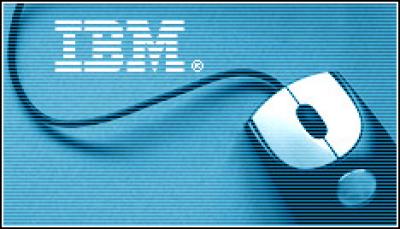Continued from page 3
Opening up to Linux
IBM also placed a bet on Linux when it put the open-source operating system on its mainframes in 1999. Bob Sutor, IBM’s vice president of open source and Linux, likes to tell the story of how Linux and open-source software gained a foothold at IBM. In 1999, he said, Gerstner was focused on enabling IBM to compete “in this amazingly heterogeneous world.”
 Sutor added that Linux “started to get the attention of our senior execs, people like Sam Palmisano and Irving Wladawsky-Berger. It had the chance of breaking down silos, and it fit in with the general ideas of the time. We had Java for application portability, XML for data portability and then Linux for hardware portability.”
Sutor added that Linux “started to get the attention of our senior execs, people like Sam Palmisano and Irving Wladawsky-Berger. It had the chance of breaking down silos, and it fit in with the general ideas of the time. We had Java for application portability, XML for data portability and then Linux for hardware portability.”
IBM also began to contribute to the open-source community, primarily by delivering software in support of open standards.
For Java developers, IBM played Santa Claus by pulling from its VisualAge product and leveraging its acquisition of Object Technology International to deliver the Eclipse IDE (integrated development environment). IBM then open-sourced the IDE in 2001 and spun out the Eclipse Foundation in 2004. Eclipse has since fostered a massive ecosystem.
Focusing on Software
In 2010, IBM earned $22.5 billion (£13.7bn) in revenue from software. According to some industry reports and an analysis of the financial statements of leading software vendors, if the IBM Software Group were an independent entity, it would be the second largest software company in the world, behind Microsoft.
It wasn’t always that way. In fact, IBM used to give software away as part of its hardware sales.
“Software was the incremental build off the deep domain knowledge,” said Mills, who has been running IBM’s software business since 1988 and heading the IBM Software Group since its establishment in 1995. In 2010, Mills was tasked with running the overall systems business as well.
Even though IBM was producing software in the 1950s, it didn’t focus heavily on it until the late 1980s and only got serious about software in the mid-1990s. Meanwhile, the company began to adopt agile methods for developing its products.
During this timeframe, IBM had struck a partnership with Microsoft to develop a new PC operating system: OS/2. They struck the deal in 1985, but by 1990, Microsoft pulled out to focus on Windows, which left OS/2 to wither.
 Needing a foundation for its new software business, IBM approached Lotus with aspirations to acquire the productivity software maker. The offer was rebuffed, but, after a hostile takeover bid, IBM got Lotus for $3.5 billion in 1995. IBM then acquired Tivoli in 1996 and Rational in 2002. The IBM Software Group now consists of five primary groups or brands: Information Management software, Tivoli, Lotus, Rational and WebSphere.
Needing a foundation for its new software business, IBM approached Lotus with aspirations to acquire the productivity software maker. The offer was rebuffed, but, after a hostile takeover bid, IBM got Lotus for $3.5 billion in 1995. IBM then acquired Tivoli in 1996 and Rational in 2002. The IBM Software Group now consists of five primary groups or brands: Information Management software, Tivoli, Lotus, Rational and WebSphere.
“IBM bet big on software in the late 1980s and early 1990s and decided to focus on a consistent set of services across platform,” said Hurwitz of Hurwitz & Associates. “The company broke down stove pipes between organisations and started to focus on a holistic IBM that focused more on a customer-benefit view rather than technology business units. This has paid off well.
“IBM also made significant investments in big software plays in the infrastructure space, rather than in the traditional packaged applications market. This gave IBM the luxury of moving into what it calls Smarter Planet, which is focused on business best practices implemented in software. I think this was a very smart move.”
Continued on page 5





